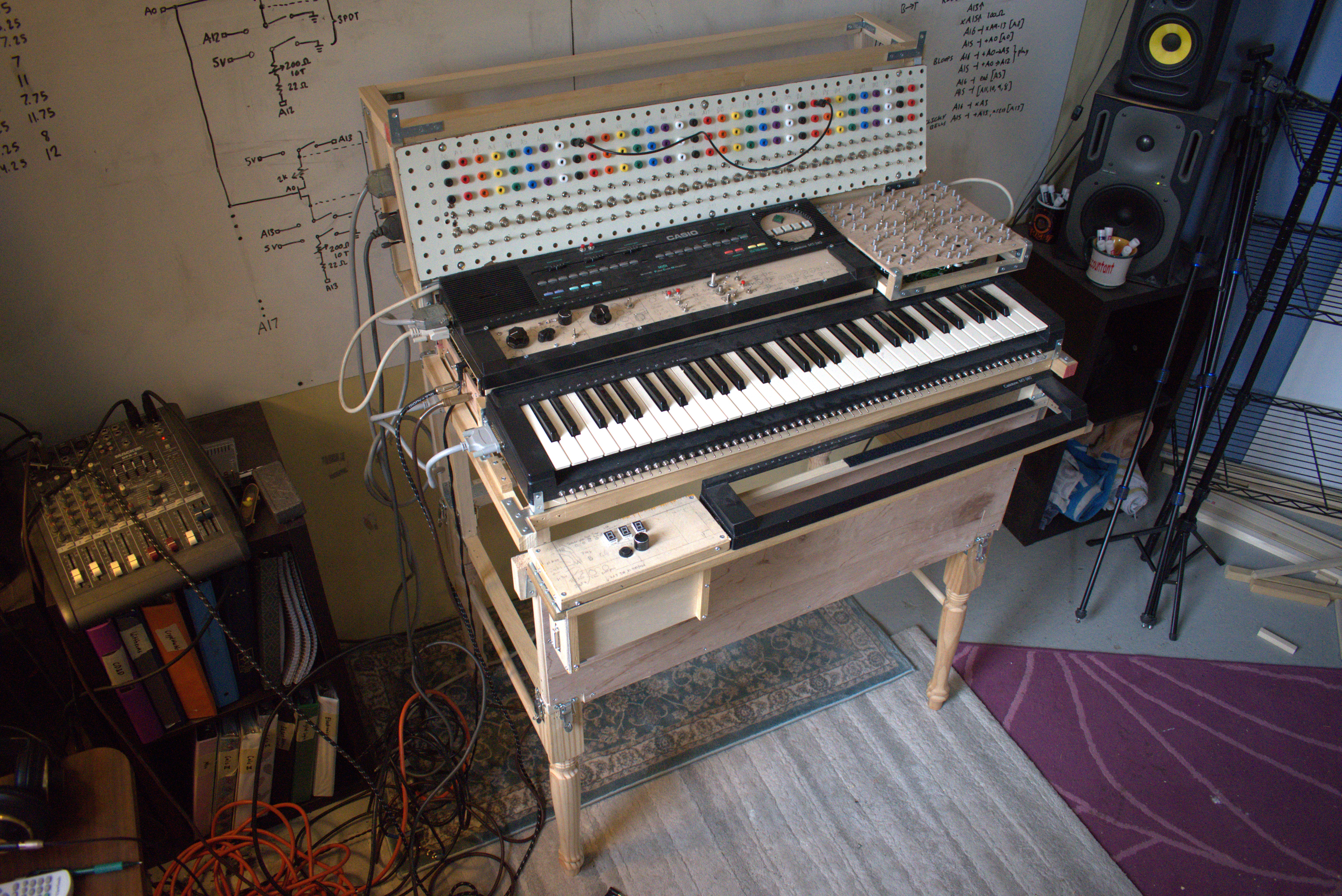
- Timbre Controller
- Skeleton Frame
- ROM Logic Bay
- Synth Body w. Auxiliary Bends
- uC Interface
- 5 Octave Keyboard
The timbre controller allows the user to change the timbre of the preset TONES, and of the ROM-bends, while leaving everything else the same: adsr, bend-effects, pitches. This allows for many variations on the TONES and ROM-bends, and much greater control over the character of a ROM-bend.
Each spiral is one of six address pins (A12-A17) that access the ROM pages where the timbre wavetables lie. The last four pins (A14-A17) exclusively address to wavetable data. Each preset TONE will use these pins, though most tones only use two of the four, and some less than that. For example, the "piano" tone uses all four, while "chorus" uses only two, and "brass" uses none. When a pin is being used, it spikes up to a 1 or stays low at a 0 many times per second. When you ground a used pin via a ROM-bend, the pin is forced to a 0. As a result, the ROM addresses different wavetable data and the timbre changes. This leads to a combination number of variations based on how many of the last four pins a TONE uses. For example, "piano" uses all four of those pins, and thus has 15 combinations.
The controller takes this one step further, giving a ton more customizable variations. Each of the fourteen knobs on a spiral arm gates the grounding of a wavetable address pin based on the logic of another address pin. Pins A0-A13 are connected to the gates of fourteen mosfets. The source is a wavetable pin (A12-A17), and the drain is ground. When a spiral arm knob is turned down, the non-wavetable pin is allowed to gate the grounding of a wavetable pin. The effect this has is that it adds a tiny bit of timbral variation corresponding to the bit position of the non-wavetable pin. The MSB (A13) seems to gate least frequently, so a low frequency component is added. The LSB (A0) seems to gate the most frequent, so a very high frequency component is added. Because the wavetable for each TONE is different, there are tons of variations between each TONE, its usable wavetable pins, and spiral arm gates.
In order to use it, one must refer to this table that lists the usable wavetable address pins for each TONE. This tells the user which spiral arm is active with which TONE.
There is also one other function of the controller, and that is it can be used to "freeze" a wavetable address pin by forcing it to a logic "1". A larger 200 ohm pot at the base of the spiral arms also let one tune analogly between logic levels, which has an interesting random semi-freezing effect when tuned right at the threshold. This semi-frozen state is when the first two wavetable address pins can be used (A12 & A13). Using them otherwise will temporarily disable the keyboard, because they also address non-wavetable (program or synthesis) data. However, playing in the semi-frozen or frozen states doesn't use the keyboard.
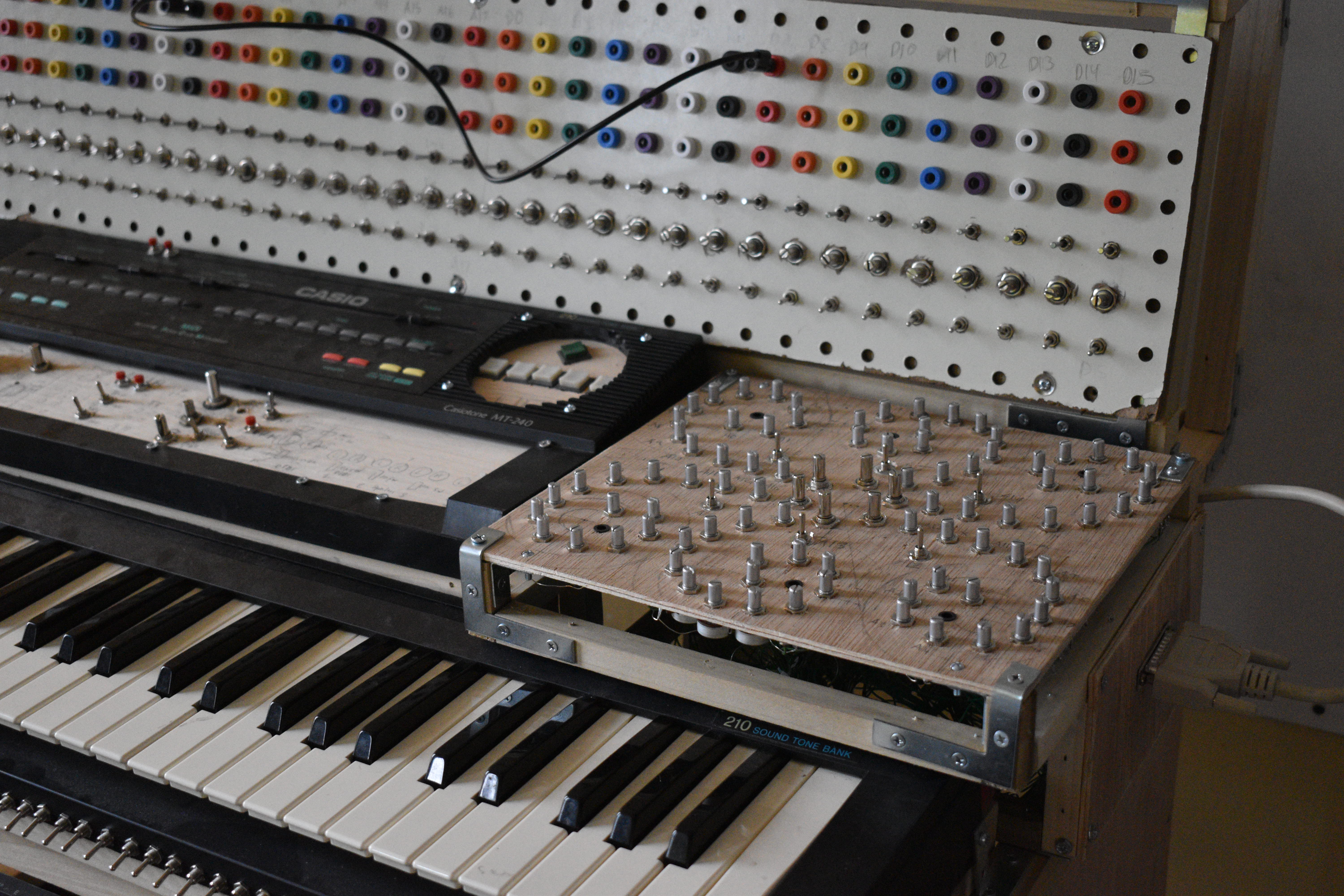
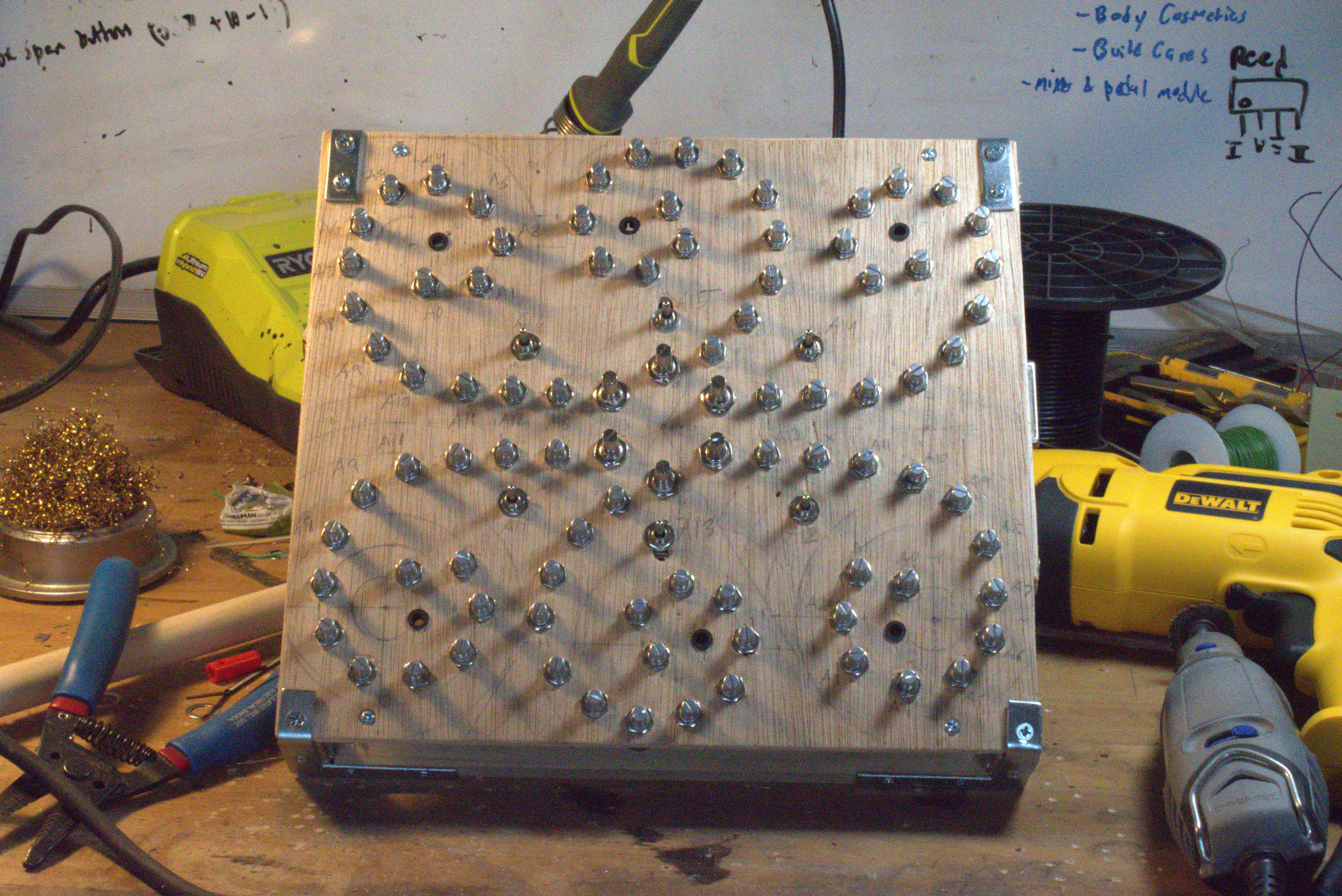
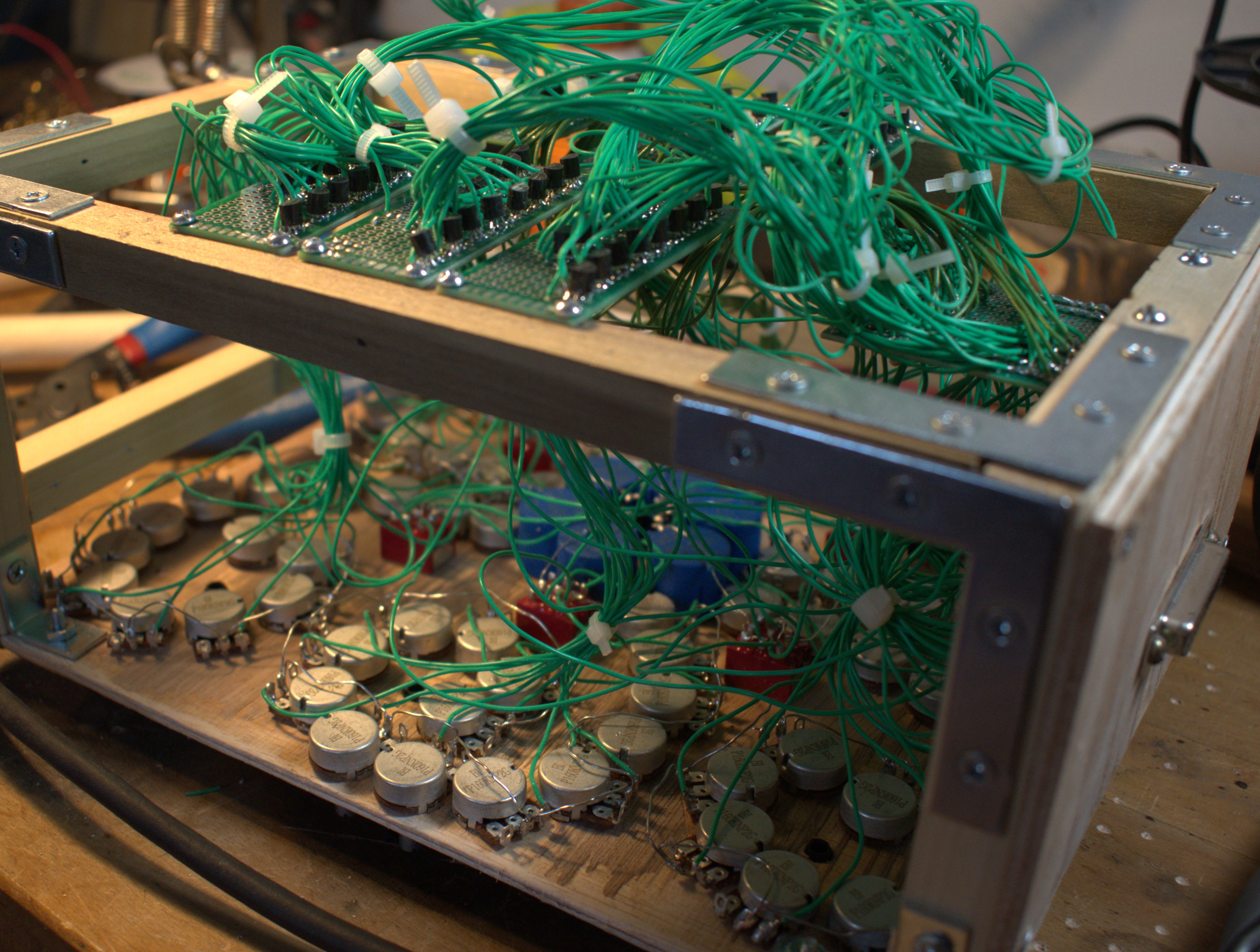
todo:
- uC pulse switchable grounding, with LED indicator
The Frame recieved some major updates in April. It is now as deep (20") and as tall (32", folded up) as it can be, while still fitting in my friend's bus. The legs are reattached, now with hinges that allow it to fold in, like a camel sitting down. 12 latches hold the 4 legs tightly in place when standing up. Additionally, the rig for the ROM Logic Bay, attached to the top, also folds over.
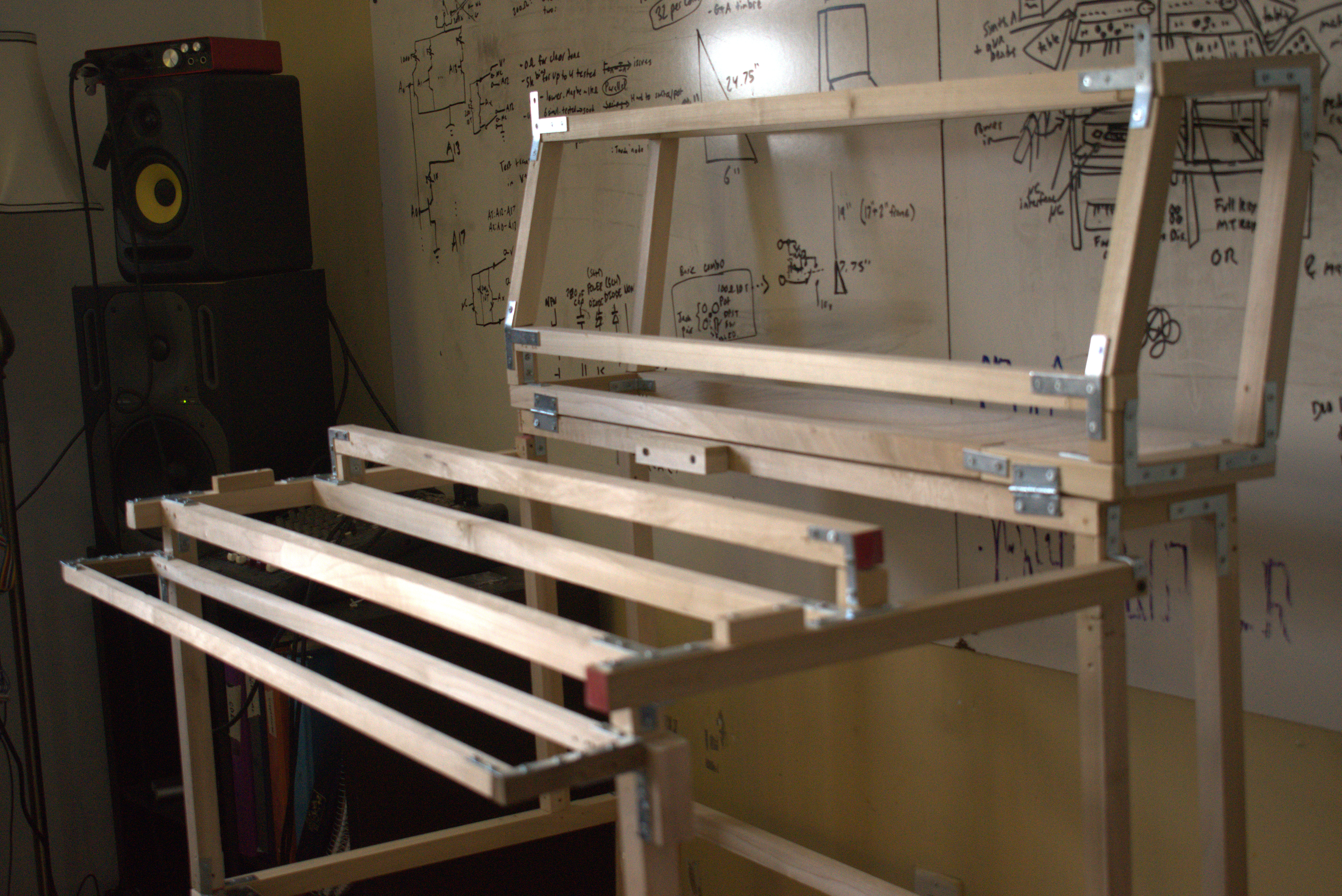
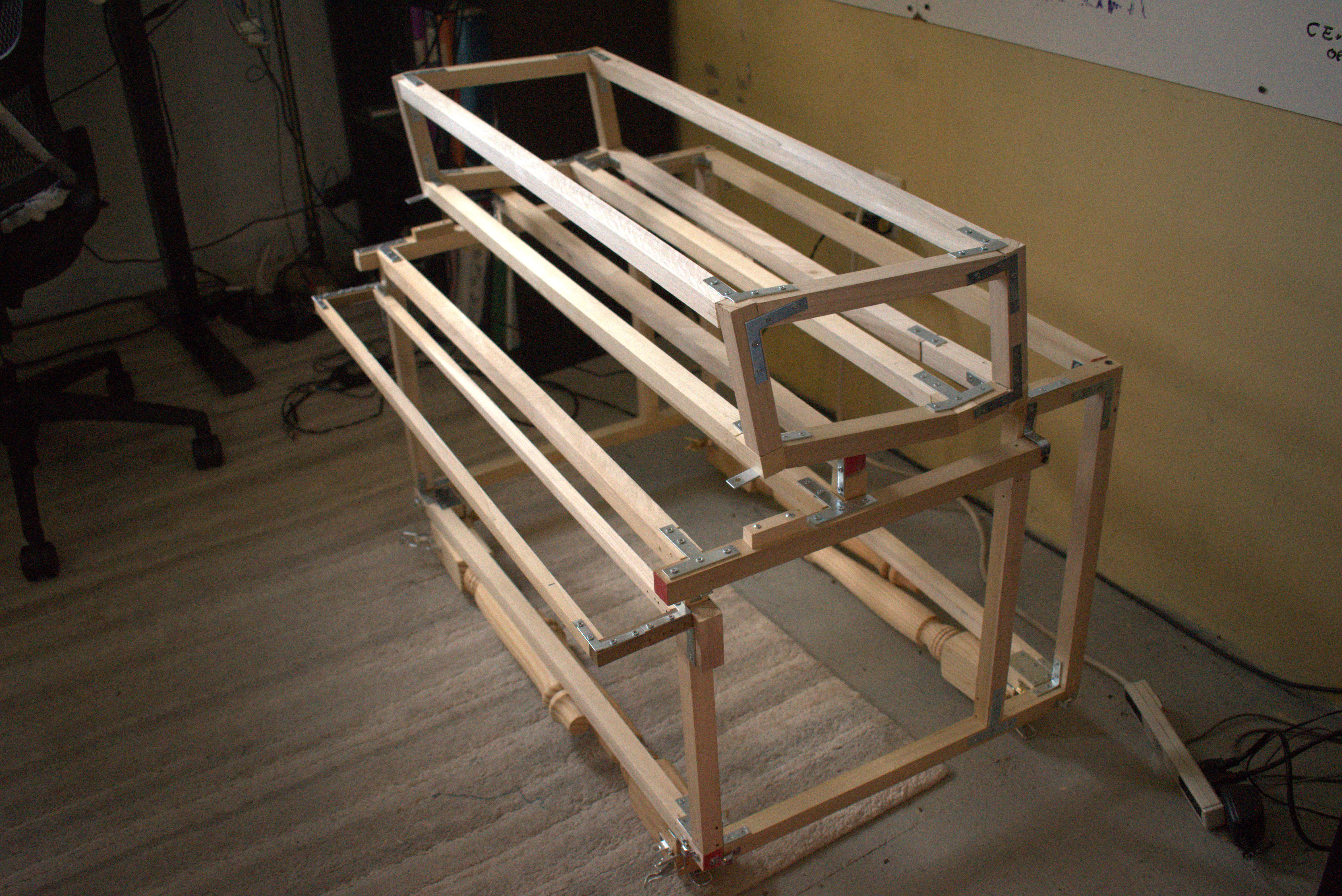
The ROM Patch Bay/Logic Controller. Each ROM pin is broken out to a column on the controller. Each column has six components. The top three are the ROM Patch Bay. Banana jacks let ROM pins get patched together using banana cables. The bottom three are the Logic Controller. An on-off-on switch lets one connect a ROM pin to either V+ or Gnd, forcing it to a logic 1 or 0. The 200 ohm 10 turn Pot allows for analog tweening between the digital logic levels, as well as allow for "tuning" of patches on the Patch Bay (some patches need between 0-400 ohms resistance). The bottom switch is a bypass of the Pot for quick switching.
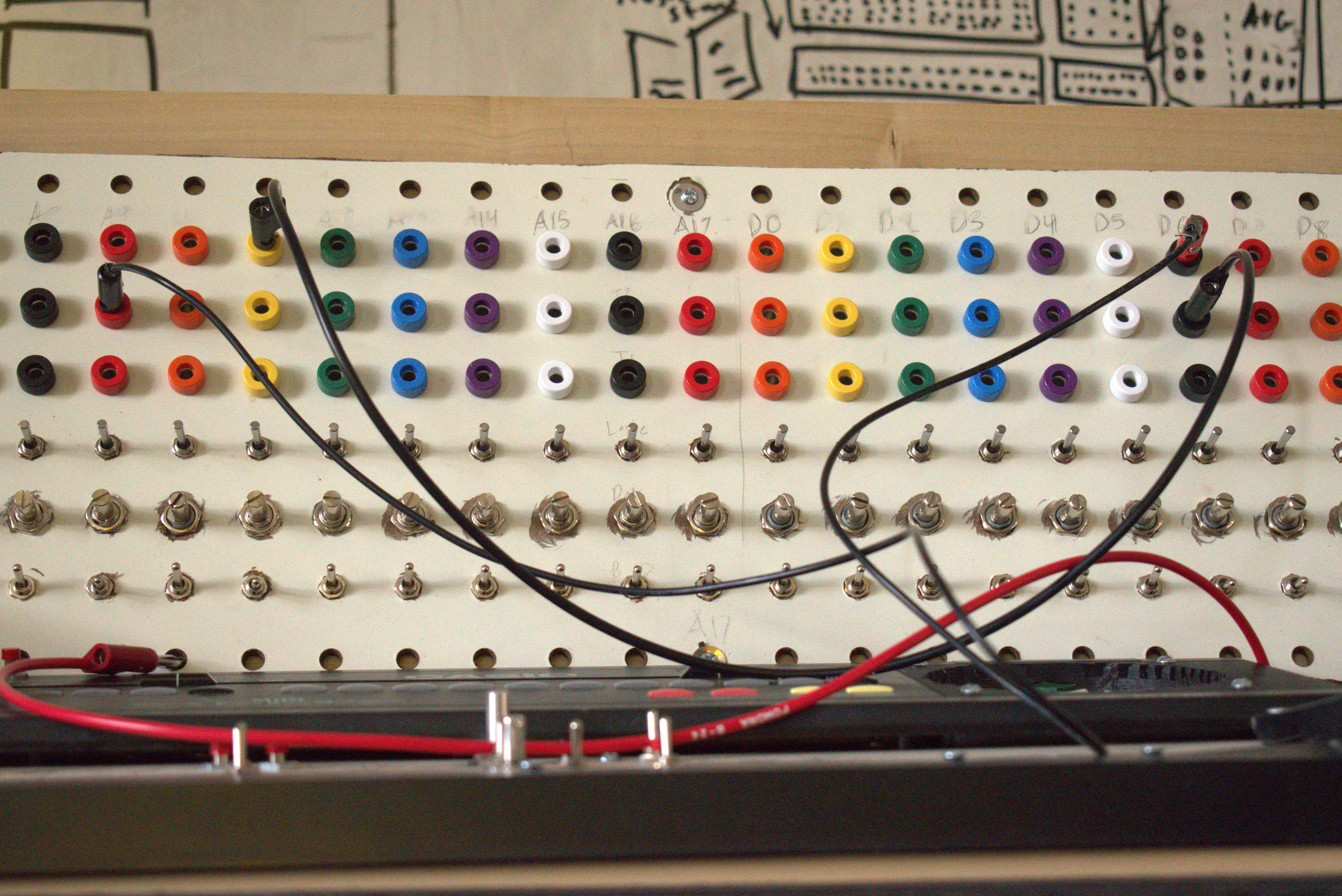

todo:
- add LEDs for logic indicators
- make it look nicer
This is the Synth Body, with the original main MT-240 circuit board. I've removed the back and made the board vertical so I can access it easier. The body is also home to all auxiliary bends. The controls for these are where the original keyboard used to be, and the circuits are mounted on the bottom.
The aux. bends circuit can be broken down into a couple of smaller circuits. Read more about them below.
- Clock circuit
- LC pitch circuit
- Hidden functions
- ROM dysregulate and disengage
- DAC overdrive & squealers
A menu interface with a rotary dial, select, return buttons to choose a uC function. The idea is, for example: 5 => LC pitch circuit; 5.7 => LC tremolo circuit; 5.7.9 => fastest tremolo speed, send. I'm very happy with how this turned out. I think it'll also be a good framework for programming the microcontroller.
There's also an ignition key now.. vroom vroom!!!!!!!!
to do:
- add indicator LEDs (indicates when critical things are functioning)
A five octave keyboard torn from a different Casio. I added switches to every single key for individual note sustains. It's good and reliable for now, but I think I will replace this in the future with a more advanced keyboard.
todo:
- add pressure sensitivity to volume control
- add simpler uC sequencer interface, perhaps combine with individual note sustain
- add LED ROM-Patch range indicators
- reconfigurable keys for different ROM-patches? would have to have keyboard piped to uC before synth
The clock is powered by an external ltc1799 squarewave oscillator chip. The speed of the oscillator is currently controlled by a resistance up to 1M. A rotary dial is used to select between modes: potentiometer, ldr, or steps (controlled by another rotary dial). A switch controls the range of the oscillator. I believe I've covered the entire range of clock speeds possible with this chip and this Casio, so I'm satisfied with this.
todo:
- Try uC pulsing an LED to control the LDR
- once the second MT-240 is up, chain this oscillator to that clock circuit to sync both synth's clocks. May need to "duplicate" this wave, maybe use an op amp unity gain follower?
- far future: divide the frequency to have clk speed ratios between synths. Also, maybe the uC can then interpret this to do things based on the synth clock speed
The pitch of the synth is based on the frequency of a resonating LC circuit. I've added two variable capacitors to greatly vary the pitch, one as trimmer, other as main pitch control. I'm really happy with the range, almost a P5, and just at the upper limit of before the synth begins to crash. The lower limit can still be explored. I did some experiments and found a weird way to use a 10 turn 100ohm pot (I think as a variable center-tapped inductor, since the 10 turns are coiled) to reach this super low, awesomely unstable pitch range. This really is one of the best effects, but this isn't quite as reliable as I'd like, and it does not work with the pitch varicap. I am considering using a rotary dial to choose between these two modes, but that wouldn't be ideal. I need to do a lot more research, or get lucky.
todo:
- find a way to access that super duper low range reliably
- stepped switches for pitches, maybe also uC pulsed reed option
- touch node
- uC controller motor to turn trimmer varicap to make tremolo effect
There's a bunch of useful hidden functions that are on other Casio synths but no hardware for on the MT-240. These are simple switches & diodes between points on the circuit, but connecting them efficiently was a challenge, since many of them share points. One of the more interesting things is that there are two additional super secret TONEs in addition to the known 10 hidden TONEs. They are glitchy and not very pleasant, but they act as a preset TONE. I think this is because there are 2^5 = 32 Address "chapters" in the ROM that correspond to TONEs, but only 30 that are actually programmed. I think I can make buttons for those extra two with the help of the uC.
todo:
- add two glitch TONEs
- add 8 'atmosphere' buttons & control buttons (part of MT-540 ROM- maybe also add optional 540 ROM??)
- add tritone spam button (a special effect coming from the way the keyboard matrix is layed out)
These controls affect the BHE, OE, Vss, Gnd pins on the ROM chip. The BHE and OE pins have stable digital signals that enable the ROM, but using a pot like this causes the signals to enter a scary disregulated mode which may glitch out or disable the ROM. Some improvements can be made so that they aren't just leaking current when not being used. The Vss & Gnd disengage switches disengage the V & G signals on the Logic Patch Bay from the ROM chip, useful for a type of quick reset with help from the uC.
todo:
- optimize BHE, OE pot circuits
These circuits affect the DAC. I've experimented, but haven't built them yet. The Squealer scream and have all sorts of oscillating effects by creating feedback paths to the DAC inputs. These will probably affect the functionality of some or all of the other bends, when enabled, because they sort of take precedence over everything else being at the end of the audio chain. The Overdrive will probably be the most stable, and can be adjusted for intensity, it can get LOUD. Excited to work on these. They can be controlled by LDRs and uC by pulsing LEDs.
- Switchboard (to connect to patch bay)
- Gliss Controller
- Power distribution
- uC keyboard sequencer
- 4x4 active matrix mixer
- pedal rack
- foot pedals
- Second MT-240 with a few aux bends, small patch bay, and logic array controller
After the timbre controller, things need to be finished and ready for a June tour. I'll be going over each of the modules and doing a fine-tuning/cosmetic upgrade, and add a few small but major things like mounting the power and stereo audio jacks. When I return in July, I'll finish the uC sequencer next.